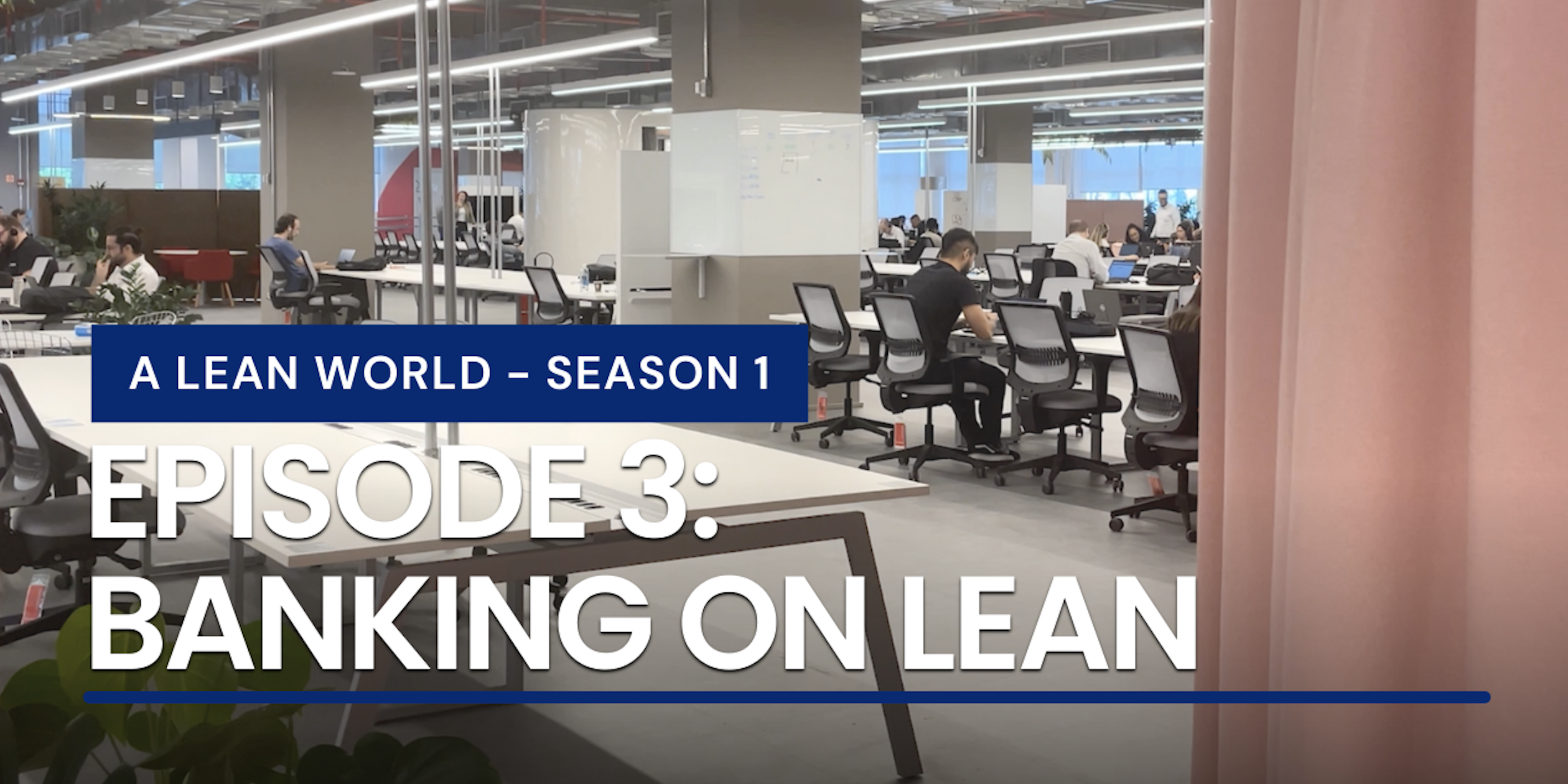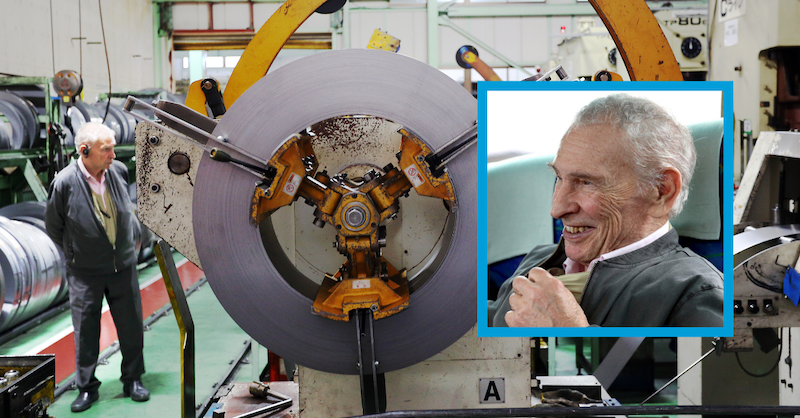
How to work with lean thinking and challenging people
FEATURE - No matter how hard you try to convince them about lean, some people stay stubborn, aggressive and helpless. So instead of pushing your way onto them, have them pull the appropriate responses from you.
Words: Frances Steinberg, PhD, Company Director, Solutions un-Limited
While lean places valuing "people" into one of its foundational pillars, there isn't a lot of detail as to how to tweak lean practice, when the trainee, client, or customer is defiant, fragile, obstructive, or uninterested. The common belief expressed in a lot of lean writing and practice is that once you explain or demonstrate how amazing and productive lean thinking is, the other person will be won over and shift their behavior.
Research is fairly clear, however, that no matter how compelling our argument, there are people whose non-compliance, aggression, helplessness, or stubbornness is rooted in causes that can't be budged by either logic or enthusiasm.
12 years of longitudinal data from the Canadian National Population Health Survey (Statistics Canada, 2010) among Canadians aged 50 or older shows that three in four smokers with respiratory disease do not quit smoking, most people with diabetes or heart disease will not become more physically active, and virtually no one diagnosed with cancer, heart disease, diabetes or stroke will increase their intake of fruit and vegetables based on having received information about the benefits of doing so.
And pushing our way of doing things onto them won't help at all. When does push ever help?
The problem, of course, is that "people," like all collective nouns, actually refers to many unique individuals, each of whom might be following a different path and agenda.
For example, the individuals who attend your session on how to implement a lean transformation at their company might have very different reactions to the process:
- Carlos is angry that you're here because he wanted to lead the process.
- Katie is agreeable but becomes helpless if asked to try anything.
- Pam is wary of what you have to say because she feels their old model worked well.
- Delia wants to hear practical suggestions instead of spending time processing.
- Steady as a rock, Bob engages in each task you present.
- Liz is definitely not on board and keeps trying to derail the process.
- Dave keeps correcting what you say based on information he learned at a Lean Summit.
What seems to happen, unfortunately, is that when faced with unexpected and unusual behavior, practitioners may abandon the very core of their lean practice. They lock into a philosophically correct model of working with people, and even when presented with evidence that it's not working, they keep pushing the approach because they know it's "right."
There's no doubt that the principles of lean leadership, coaching, and consulting are philosophically correct: you should always strive to be respectful, collaborative, and empowering. And those values are strengthened further when combined with the equally sound technical principles of lean—flow, pull, and continuous improvement. But if we value PDCA thinking, whether embodied in the A3 management process or in the steps of the Improvement Kata, then clearly we should adjust how we respond when the other person is resisting or ignoring us. Whether products or people, stop pushing and switch to pull!
Converting to pull is as difficult with people as it is in production – it necessitates a fundamental shift. Switching to pull with people requires us as leaders and coaches to assume a flexible stance, adjusting our approach depending on the context and the people involved. One effective way to stop pushing and let the other's person's attitude and behavior pull the way you work with them is to use FLEX, a system that Rick Whiteside and I have developed and tested over several decades, a type of interpersonal PDCA with steps similar to the A3 process or the Improvement Kata.
The first step in being FLEX-ible – just as with any lean improvement process – is to have a clear idea of what you want to achieve. Do you want to create an A3, have a discussion about current states, or implement a counter-measure? Targeting a goal is less about forcing others to do your bidding, and more about both of you reaching a positive, mutually beneficial outcome. Once you've set the target, you'll not only know where you're headed, you'll know when you've reached success!
The next step involves examining whether you need to be more FLEX-ible to reach the goal. Obviously, when things are going well, and the goal is being reached, there's no need to shift - just keep doing what you've been doing. But if you're not making progress, and you or the other person are feeling frustrated, angry, disempowered, hurt, overwhelmed, stymied, immobilized, combative, tired... chances are you would benefit from using FLEX.
The third step is to identify what the person is saying (and why they are saying it):
- People who say YES are very agreeable and cooperative. They support your point of view and happily carry out suggestions or requests. Even when they can't do exactly what you ask, they let you know in a positive manner. Interactions with people who say YES typically leave you feeling positive and successful.
- Dealing with people who say NO is usually an unpleasant experience. They can be actively or passively aggressive, contemptuous, and exasperating. NO people insist on getting their own way and refuse to compromise or negotiate. If you ask them to do something, they refuse to comply or could even do the opposite of what you suggest. If you ask them a question, they either ignore you or say something nasty.
- The great majority of people fall into the MAYBE category. People who say MAYBE operate on the basis of "it depends." So sometimes they do what you request or suggest, and sometimes they don't. They alternate between saying YES and NO depending on the situation, what you're asking, or who's present.
- Interacting with YES BUT people generally wreaks havoc with your emotions and sanity. They seem to be saying YES until they get to the point of actually doing something or giving you an answer. At that point their YES evaporates as quickly as a mirage, and in its place is a great big BUT.
- NO OK people are not always apparent at first and can sometimes be mistaken for other types (such as MAYBE or NO). They always have an initial negative reaction to everything - no matter what you ask them to do, they will always first say NO! After a while this knee-jerk reaction disappears and they start to say OK - although they will never acknowledge the worth of your idea once they do.
These responses aren't necessarily a permanent part of someone's personality - a person can change what they're saying depending on what you're asking them to do, where they are, or who else is around. And that determination can be made using one simple question - if you ask someone to do something, what do they do? People who say:
- YES usually do it right away
- NO don't do it, and either ignore you or become argumentative
- MAYBE will sometimes do it, and sometimes won't - it depends
- YES BUT say they'd like to do it but have a million reasons why they can't
- NO OK tell you why they won't/can't do it, but then do it anyway
There isn't space or time in this piece to go through all of the reasons why someone says what they do - it is important, however, to realize that saying YES isn't always a positive reaction, or saying NO the result of a negative purpose. We believe people often have good reasons for their reluctance, helplessness, or aggressive attitude. Instead of trying to change them, you can become FLEX-ible, altering what you do to get past their issues and improve the probability of a successful outcome.
Once you know what someone is saying and why they are saying it, you need to become FLEX-ible and adjust how you interact with them.
- If someone is saying YES, you want to be directive, so go ahead and give them suggestions and make your opinions known. Enjoy the positive interaction and the atmosphere of mutual respect as you jointly work toward the goal.
- If someone is saying NO, you need to avoid reacting emotionally - keep calm and detached. You'll be most successful if you come at things indirectly rather than head on. And it's really helpful if you can find their hook - something related to their interests or relationships that is so important to them, they'll be willing to work toward the goal.
- Because everything about people who say MAYBE "depends" - on the request, the setting, or the people involved - you need to be FLEX-ible in how you interact with them too. Maximize the context for success and remove any blocks that are keeping them from achieving the goal.
- YES BUT people are extremely frustrating but you can reach positive outcomes if you stop telling them what to do. Acknowledge the depth or complexity of their issues, and then either yield responsibility for solving the problem to them or provide a fixed number of ideas from which they can choose the best solution.
- When NO OK people are resisting, you should give them the gift of time, so they can process what's required. Work to soften their defenses, and explain the potential consequences of their saying NO.
It's just as important to know what NOT to do for each type.
- If someone is saying YES, make sure you don't abuse the power they're giving you - remember that authoritative is not the same as authoritarian. Don't keep asking them what they would do, although at some point you will want to encourage them to stand on their own two feet.
- If someone says NO, stop telling them what to do - they're not going to listen to you anyway, so you might as well save your energy. It's also important to avoid reasoning with them - people who say NO operate from the premise, "I've already made up my mind, stop bothering me with the facts!" And whatever you do, don't irritate or provoke them - you wouldn't poke a rabid dog with a stick, so don't make things worse by winding them up.
- The worst thing you could do when someone says MAYBE is to become rigid in your approach or to push them into saying NO by your actions.
- You must always avoid giving YES BUT people solutions or continually trying to come up with ever better suggestions for them. The more you tell them what to do, the bigger the BUT!
- When NO OK people are resisting, don't shame or blame them, it will only lock them into their resistance. And it's equally non-productive to give lengthy explanations about why they should behave differently.
Let's revisit the individuals attending your lean transformation training to see what strategies they could pull if you were acting FLEX-ibly:
- Carlos is saying NO. Don't try to reason with him or get flustered by his reactions. Instead use his "hook" of wanting to be in charge by deferring to his expertise and having him lead discussions.
- Katie is saying YES BUT. Don't try to explain the value of lean or make direct suggestions. Give her a choice between learning how to do an A3 or a Value Stream Map.
- Pam is saying MAYBE because she likes the old system. You can shift her to YES by acknowledging the strengths of the previous model and frame lean as a way of fixing the negatives.
- Delia is saying MAYBE. She says YES as long as you teach her practical information, but NO if she has to process things. So keep Delia engaged by directly giving her tasks to do.
- Bob is saying YES. You can directly give him ideas and suggestions, making sure you empower him to work independently by the end of the session.
- Liz is saying NO. Don't try to reason with her or let her pull the process off task. Try to redirect your interactions with her to something less inflammatory or find her hook.
- Dave is saying NO OK because he wants to show he's knowledgeable too. Ask him to give help to one of the people in the group new to lean while they work on a task.
So are you saying YES, NO, MAYBE, YES BUT or NO OK to the idea of FLEX? Hopefully, you're now feeling a bit more empowered to flexibly pull, rather than push, with resistance.
THE AUTHOR

Read more


WEB SERIES – Episode 3 of our docuseries on lean in Brazil takes us to the second largest bank in the country. Learn how Bradesco is striving to improve its processes to provide more value to its customers using Lean Thinking.


FEATURE – On October 31st, the Lean Movement lost one of his pioneers. In this piece, Dan Jones reflects on Freddy Ballé’s legacy.


FEATURE – When it comes to the fight against climate change, we can’t expect to achieve much until we fundamentally challenge the way we think about resource consumption. Lean is our tool to do that.


FEATURE - Strategy deployment is fundamental to a lean transformation, but managers often struggle to understand its importance amid the day-to-day firefighting. This article will tell you how to make hoshin happen.

